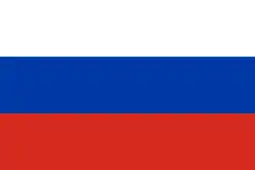Charles I of Württemberg
Charles (German: Karl Friedrich Alexander; 6 March 1823 – 6 October 1891) was King of Württemberg, from 25 June 1864 until his death in 1891.[1]
| Charles I | |||||
|---|---|---|---|---|---|
 | |||||
| King of Württemberg | |||||
| Reign | 25 June 1864 – 6 October 1891 | ||||
| Predecessor | William I | ||||
| Successor | William II | ||||
| Born | 6 March 1823 Stuttgart, Kingdom of Württemberg | ||||
| Died | 6 October 1891 (aged 68) Stuttgart, Kingdom of Württemberg | ||||
| Burial | 8 October 1891 Schlosskirche, Stuttgart, Germany | ||||
| Spouse | |||||
| |||||
| House | Württemberg | ||||
| Father | William I of Württemberg | ||||
| Mother | Pauline Therese of Württemberg | ||||
| Religion | Lutheranism | ||||
Early life

Charles was born on 6 March 1823 in Stuttgart as the son of King William I and his third wife Pauline Therese (1800–1873).[2] As the king's eldest son he became Crown Prince of Württemberg. He studied in Berlin and Tübingen.
Marriage and King of Württemberg
On 13 July 1846 Karl married Grand Duchess Olga Nikolaievna of Russia, the daughter of Tsar Nicholas I and Charlotte of Prussia.[2] (Charlotte was a daughter of Frederick William III of Prussia and of Louise of Mecklenburg-Strelitz; she took the name Alexandra Feodorovna upon her marriage into the Russian imperial family.) Karl acceded to the throne of Württemberg upon his father's death in 1864.

The couple had no children, perhaps because of Karl's homosexuality.[3] Karl became the object of scandal several times for his closeness with various men - most notoriously with the American Charles Woodcock, a former chamberlain whom Karl elevated to Baron Savage in 1888.[4][5] Karl and Charles became inseparable, going so far as to appear together in public dressed identically. The resulting outcry forced Karl to renounce his favorite. Woodcock returned to America, and Karl found private consolation some years later with the technical director of the royal theater, Wilhelm George.[3]
In 1870, Olga and Karl adopted Olga's niece Vera Konstantinovna, the daughter of her brother Grand Duke Konstantin.
Politics
He sided with Austria in the Austro-Prussian War of 1866, but after the battle of Sadowa concluded a secret military treaty with Prussia, and took part on her side in the Franco-Prussian War of 1870–'71, joining the new German Empire at the close of 1870.[6]
He died, childless, in Stuttgart on 6 October 1891, and was succeeded as King of Württemberg by his sister's son, William II. He is buried, together with his wife, in the Old Castle in Stuttgart.
Honours
 Württemberg:
Württemberg:
- Grand Cross of the Württemberg Crown, 1837[7]
- Grand Cross of the Friedrich Order[7]
- Founder of the Order of Olga, 27 June 1871
 Russian Empire: Knight of St. Andrew, April 1829
Russian Empire: Knight of St. Andrew, April 1829.svg.png.webp) Baden:[8]
Baden:[8]
- Grand Cross of the House Order of Fidelity, 1830
- Grand Cross of the Zähringer Lion, 1830
.svg.png.webp)
.svg.png.webp)
.svg.png.webp) Ernestine duchies: Grand Cross of the Saxe-Ernestine House Order, April 1841[9]
Ernestine duchies: Grand Cross of the Saxe-Ernestine House Order, April 1841[9].svg.png.webp) Kingdom of Prussia: Knight of the Black Eagle, 20 May 1841[10]
Kingdom of Prussia: Knight of the Black Eagle, 20 May 1841[10].svg.png.webp) Kingdom of Bavaria: Knight of St. Hubert, 1841[11]
Kingdom of Bavaria: Knight of St. Hubert, 1841[11] Austrian Empire: Grand Cross of St. Stephen, 1845[12]
Austrian Empire: Grand Cross of St. Stephen, 1845[12].svg.png.webp) Saxe-Weimar-Eisenach: Grand Cross of the White Falcon, 19 September 1846[13]
Saxe-Weimar-Eisenach: Grand Cross of the White Falcon, 19 September 1846[13] Grand Duchy of Hesse: Grand Cross of the Ludwig Order, 22 October 1848[14]
Grand Duchy of Hesse: Grand Cross of the Ludwig Order, 22 October 1848[14] Oldenburg: Grand Cross of the Order of Duke Peter Friedrich Ludwig, with Golden Crown, 17 October 1853[15]
Oldenburg: Grand Cross of the Order of Duke Peter Friedrich Ludwig, with Golden Crown, 17 October 1853[15] Kingdom of Hanover:[16]
Kingdom of Hanover:[16]
.svg.png.webp) Kingdom of Saxony: Knight of the Rue Crown, 1864[17]
Kingdom of Saxony: Knight of the Rue Crown, 1864[17].svg.png.webp) French Empire: Grand Cross of the Legion of Honour, July 1867[18]
French Empire: Grand Cross of the Legion of Honour, July 1867[18].svg.png.webp)
 Sweden-Norway: Knight of the Seraphim, 17 October 1879[19]
Sweden-Norway: Knight of the Seraphim, 17 October 1879[19]_crowned.svg.png.webp) Kingdom of Italy: Knight of the Annunciation, 13 April 1882[20]
Kingdom of Italy: Knight of the Annunciation, 13 April 1882[20].svg.png.webp) Spain: Knight of the Golden Fleece, 6 February 1888[21]
Spain: Knight of the Golden Fleece, 6 February 1888[21] Denmark: Knight of the Elephant, 23 June 1889[22]
Denmark: Knight of the Elephant, 23 June 1889[22] United Kingdom: Stranger Knight of the Garter, 23 April 1890[23]
United Kingdom: Stranger Knight of the Garter, 23 April 1890[23]
Arms
 Royal Monogram of King Charles I of Württemberg
Royal Monogram of King Charles I of Württemberg Coat of Arms of the Kingdom of Württemberg, 1817
Coat of Arms of the Kingdom of Württemberg, 1817 Royal Monogram of King Charles I of Württemberg, Variant
Royal Monogram of King Charles I of Württemberg, Variant
Bibliography
For Karl's homosexuality and other familiar issues:
- Queen Olga of Württemberg. Traum der Jugend goldener Stern, Reutlingen, Günther Neske, 1955
- Jette Sachs-Colignon. Königin Olga von Württemberg, Stieglitz, 2002
- Paul Sauer. Regent mit mildem Zepter. König Karl von Württemberg, Deutsche Verlags-Anstalt Stuttgart, 1999
References
- Kessler, P L. "Kingdoms of Germany - Württemberg". www.historyfiles.co.uk. Retrieved 2018-05-23.
- "King Karl I of Württemberg".
- Sabine Thomsen. Die württembergischen Königinnen. Charlotte Mathilde, Katharina, Pauline, Olga, Charlotte – ihr Leben und Wirken [The Queens of Wuerttemberg: Charlotte Matilde, Katharina, Pauline, Olga, Charlotte – Their Lives and Legacies]. Silberburg-Verlag, 2006.
- Jette Sachs-Colignon. Königin Olga von Württemberg, Stieglitz, 2002.
- [Mann für Mann, Bernd-Ulrich Hergemöller, Pages 409, 410]
- One or more of the preceding sentences incorporates text from a publication now in the public domain: Ripley, George; Dana, Charles A., eds. (1879). . The American Cyclopædia.
- Hof- und Staats-Handbuch des Königreich Württemberg (1847), "Königliche Orden" pp. 30, 48
- Hof- und Staats-Handbuch des Großherzogtum Baden (1834), "Großherzogliche Orden" pp. 32, 50
- Adreß-Handbuch des Herzogthums Sachsen-Coburg und Gotha (1843), "Herzogliche Sachsen-Ernestinischer Hausorden" p. 6
- Liste der Ritter des Königlich Preußischen Hohen Ordens vom Schwarzen Adler (1851), "Von Seiner Majestät dem Könige Friedrich Wilhelm IV. ernannte Ritter" p. 21
- Bayern (1867). Hof- und Staatshandbuch des Königreichs Bayern: 1867. Landesamt. p. 8.
- "A Szent István Rend tagjai" Archived 22 December 2010 at the Wayback Machine
- Staatshandbuch für das Großherzogtum Sachsen / Sachsen-Weimar-Eisenach (1851), "Großherzogliche Hausorden" p. 9
- Hof- und Staats-Handbuch des Großherzogtum Hessen (1879), "Großherzogliche Orden und Ehrenzeichen" p. 10
- Hof- und Staatshandbuch des Großherzogtums Oldenburg (1858), "Der Großherzogliche Haus und Verdienst-orden des Herzogs Peter Friedrich Ludwig" p. 31
- Staat Hannover (1863). Hof- und Staatshandbuch für das Königreich Hannover: 1863. Berenberg. pp. 38, 78.
- Staatshandbuch für den Freistaat Sachsen: 1865/66. Heinrich. 1866. p. 4.
- M. & B. Wattel (2009). Les Grand'Croix de la Légion d'honneur de 1805 à nos jours. Titulaires français et étrangers. Paris: Archives & Culture. p. 540. ISBN 978-2-35077-135-9.CS1 maint: uses authors parameter (link)
- Sveriges Statskalender (in Swedish), 1881, p. 378, retrieved 20 February 2019 – via runeberg.org
- Italia : Ministero dell'interno (1889). Calendario generale del Regno d'Italia. Unione tipografico-editrice. p. 52.
- "Caballeros de la insigne orden del toisón de oro", Guía Oficial de España (in Spanish), 1890, p. 152, retrieved 21 March 2019
- Jørgen Pedersen (2009). Riddere af Elefantordenen, 1559–2009 (in Danish). Syddansk Universitetsforlag. p. 472. ISBN 978-87-7674-434-2.
- Shaw, Wm. A. (1906) The Knights of England, I, London, p. 68
External links
| Wikimedia Commons has media related to Charles I of Württemberg. |
Charles I of Württemberg Born: 6 March 1823 Died: 6 October 1891 | ||
| Regnal titles | ||
|---|---|---|
| Preceded by William I |
King of Württemberg 1864–1891 |
Succeeded by William II |